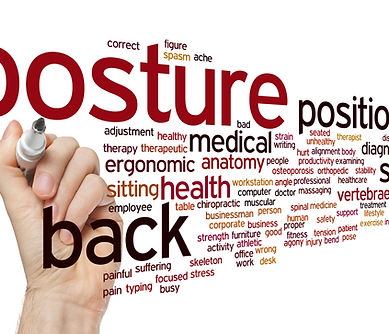
Building a Sustainable Future, in Support of Our Environment
Common Hazards

Working at Height
The Work at Height Regulations 2005
Most common hazards when working at height is falling, followed by several recorded below.
-
Dropped Equipment & Materials.
-
Incorrect Ladder(s)
-
Poorly Arranged Equipment.
-
Fragile Surfaces or Scaffolds.
-
Poor Edge Protection & Unguarded Openings.
-
Insufficient Protective Equipment.
Media Link: Click Here (read more here)

Slip, Trips & Falls
Leading Contributing Factor of Injurys
The majority of trips are caused by obstructions in walkways. The rest are caused by uneven surfaces. Preventing these accidents is often simple and cost-effective.
You need to get all three right (walkways, housekeeping and design and maintenance), to prevent tripping accidents.
Common Causes: Contaminated Surfaces, Cleaning, People (Behavior), Flooring, Incorrect Footwear.
Media Link: Click Here (read more here)

Energy Isolation
The Electricity at Work Regulations 1989
Safe isolation procedures are a set of steps designed to ensure electrical work is carried out safely by disconnecting equipment from the power supply and verifying the absence of voltage. These procedures are crucial for preventing electric shocks and other hazards associated with energized electrical systems
-
Issue Permit-to-Work,
-
Identify the Isolation Point,
-
Use of Barriers/ Means of Separation,
-
Inform Others Nearby,
-
Disconnect the Isolation Point,
-
Prove Dead,
-
Place Warning Notices & Padlocks,
-
Repeat Process to Re-energise,
Further Considerations:
Control of Isolation (Padlock),
Training & Competence (Qualified),
Verification of Isolation (Proving Dead),
Protect Against Accidental Contact,
Risk Assessment & Method Statement,
Suitable Insulated Equipment,
Wider Control Control Implications (what else will be effected).
Media Link: Click Here (read more here)

Vibration
The Control of Vibration at Work Regulations 2005
Managing hand-arm vibration is key to maintaining a great workplace culture, whereby understanding effects and limits of hand-arm and whole-body vibration, you can ensure you're minimising the risk to employees/ others.
Exposure Limit Values & Action Values
4.—(1) For hand-arm vibration
(a)the daily exposure limit value is 5 m/s2 A(8);
(b)the daily exposure action value is 2.5 m/s2 A(8),
and daily exposure shall be ascertained on the basis set out in Schedule 1 Part I.
(2) For whole body vibration
(a)the daily exposure limit value is 1.15 m/s2 A(8);
(b)the daily exposure action value is 0.5 m/s2 A(8),
Hand-Arm Vibration & Whole-Body Vibration Calculators (available).
Media Link: Click Here (read more here)

Noise
The Control of Noise at Work Regulations 2005
Managing noise levels onsite, through decorative, engineering and via distancing measures, will significantly aid in reducing exposure towards employees/ people nearby (inc environment effects).
With hearing being a vital part of being able to navigate through our day-to-day lives, its essential, people aren't exposed, in-turn enabling communications to be held without shouting or being a nuisance.
Exposure Limit Values & Action Values
4. (1) The lower exposure action values are:
(a)a daily or weekly personal noise exposure of 80 dB (A-weighted); and
(b)a peak sound pressure of 135 dB (C-weighted).
(2) The upper exposure action values are:
(a)a daily or weekly personal noise exposure of 85 dB (A-weighted); and
(b)a peak sound pressure of 137 dB (C-weighted).
(3) The exposure limit values are:
(a)a daily or weekly personal noise exposure of 87 dB (A-weighted); and
(b)a peak sound pressure of 140 dB (C-weighted).
Media Link: Click Here (read more here)

Excavations
The Construction (Design and Management) Regulations 2015
Ground-works are one of a handful of dangerous activities, as not knowing whats below the surface layer/ underground, therefore planning, coordinating, communicating and executing excavation activities is extremely important, to ensure you get this right, the first time.
22. (1) All practicable steps must be taken to prevent danger to any person, including, where necessary, the provision of supports or battering, to ensure that
(a)no excavation or part of an excavation collapses;
(b)no material forming the walls or roof of, or adjacent to, any excavation is dislodged or falls; and
(c)no person is buried or trapped in an excavation by material which is dislodged or falls.
(2) Suitable and sufficient steps must be taken to prevent any person, work equipment, or any accumulation of material from falling into any excavation.
(3) Suitable and sufficient steps must be taken, where necessary, to prevent any part of an excavation or ground adjacent to it from being overloaded by work equipment or material.
(4) Construction work must not be carried out in an excavation where any supports or battering have been provided in accordance with paragraph (1) unless—
(a)the excavation and any work equipment and materials which may affect its safety have been inspected by a competent person—
(i)at the start of the shift in which the work is to be carried out;
(ii)after any event likely to have affected the strength or stability of the excavation; and
(iii)after any material unintentionally falls or is dislodged; and
(b)the person who carried out the inspection is satisfied that construction work can be safely carried out there.
(5) Where the person carrying out an inspection informs the person on whose behalf the inspection is carried out of any matter about which they are not satisfied (under regulation 24(1)), construction work must not be carried out in the excavation until the matter has been satisfactorily remedied.
Media Link: Click Here (read more here)

Manual Handling
Manual Handling Operations Regulations 1992
Several tools are available to help support the lifting, carrying, holding and pushing aspect of manual handling, such as MAC Tool & ART Tool.
Whilst the HSE have advised of the above weight figures, the task must be risk assessed, as some individuals (male & female) cannot lift the prescribed weight noted, either due to a past injury or physical limitations, whilst some individuals can lift more.
The below link shall help support with further information.
Media Link: Click Here (read more here)

Ergonomics
HSWA 1974 / MHSWR 1999 / DSE 2002
Workplace Problems Effecting Ergonomics and Human Factors
Ergonomics is typically known for solving physical problems. For example, ensuring that emergency stop buttons are positioned so that people can reach them readily when they need to. But ergonomics also deals with psychological and social aspects of the person and their work. For example, a workload that is too high or too low, unclear tasks, time pressures, inadequate training, and poor support from managers can all have negative effects on people and the work they do.
in-short: design the equipment around the user, without creating undue stress, fatigue and strain to our body's.
the below link shall help support with further information.
Media Link: Click Here (read more here)
.png)
Desktop Screens & Equipment (Laptops)
Health and Safety (Display Screen Equipment) Regulations
1992 as amended by the Health and Safety (Miscellaneous
Amendments) Regulations 2002
Every employer shall perform a suitable and sufficient analysis of those workstations (noted within Regulation 1) concerning display screen equipment arrangements.
Brief list recorded below:
(i) display screen equipment (whether provided with
software determining the interface between the equipment and its
operator or user, a keyboard or any other input device),
(ii) any optional accessories to the display screen equipment,
(iii) any disk drive, telephone, modem, printer, document holder, work
chair, work desk, work surface or other item peripheral to the
display screen equipment, and
(iv) the immediate work environment around the display screen
equipment.
Media Link: Click Here (read more here)